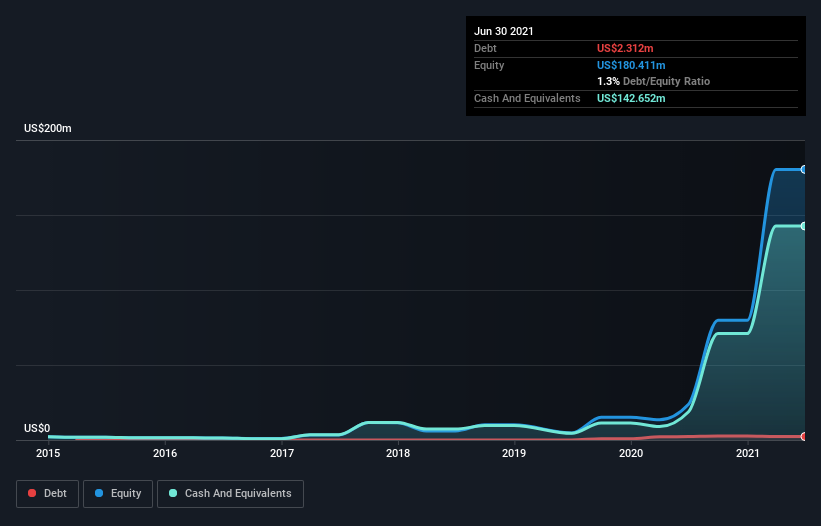Is Piedmont Lithium (ASX:PLL) A Risky Investment?
Legendary fund manager Li Lu (who Charlie Munger backed) once said, 'The biggest investment risk is not the volatility of prices, but whether you will suffer a permanent loss of capital.' So it seems the smart money knows that debt - which is usually involved in bankruptcies - is a very important factor, when you assess how risky a company is. Importantly, Piedmont Lithium Inc. (ASX:PLL) does carry debt. But the real question is whether this debt is making the company risky.
Why Does Debt Bring Risk?
Debt is a tool to help businesses grow, but if a business is incapable of paying off its lenders, then it exists at their mercy. Ultimately, if the company can't fulfill its legal obligations to repay debt, shareholders could walk away with nothing. While that is not too common, we often do see indebted companies permanently diluting shareholders because lenders force them to raise capital at a distressed price. By replacing dilution, though, debt can be an extremely good tool for businesses that need capital to invest in growth at high rates of return. When we examine debt levels, we first consider both cash and debt levels, together.
View our latest analysis for Piedmont Lithium
What Is Piedmont Lithium's Net Debt?
As you can see below, Piedmont Lithium had US$2.31m of debt, at June 2021, which is about the same as the year before. You can click the chart for greater detail. However, its balance sheet shows it holds US$142.7m in cash, so it actually has US$140.3m net cash.
How Strong Is Piedmont Lithium's Balance Sheet?
According to the last reported balance sheet, Piedmont Lithium had liabilities of US$6.21m due within 12 months, and liabilities of US$1.23m due beyond 12 months. Offsetting this, it had US$142.7m in cash and US$189.2k in receivables that were due within 12 months. So it can boast US$135.4m more liquid assets than total liabilities.
This short term liquidity is a sign that Piedmont Lithium could probably pay off its debt with ease, as its balance sheet is far from stretched. Succinctly put, Piedmont Lithium boasts net cash, so it's fair to say it does not have a heavy debt load! When analysing debt levels, the balance sheet is the obvious place to start. But ultimately the future profitability of the business will decide if Piedmont Lithium can strengthen its balance sheet over time. So if you're focused on the future you can check out this free report showing analyst profit forecasts.
Since Piedmont Lithium has no significant operating revenue, shareholders probably hope it will develop a valuable new mine before too long.
So How Risky Is Piedmont Lithium?
Statistically speaking companies that lose money are riskier than those that make money. And we do note that Piedmont Lithium had an earnings before interest and tax (EBIT) loss, over the last year. And over the same period it saw negative free cash outflow of US$34m and booked a US$20m accounting loss. Given it only has net cash of US$140.3m, the company may need to raise more capital if it doesn't reach break-even soon. Even though its balance sheet seems sufficiently liquid, debt always makes us a little nervous if a company doesn't produce free cash flow regularly. When analysing debt levels, the balance sheet is the obvious place to start. But ultimately, every company can contain risks that exist outside of the balance sheet. These risks can be hard to spot. Every company has them, and we've spotted 2 warning signs for Piedmont Lithium (of which 1 is concerning!) you should know about.
Of course, if you're the type of investor who prefers buying stocks without the burden of debt, then don't hesitate to discover our exclusive list of net cash growth stocks, today.
This article by Simply Wall St is general in nature. We provide commentary based on historical data and analyst forecasts only using an unbiased methodology and our articles are not intended to be financial advice. It does not constitute a recommendation to buy or sell any stock, and does not take account of your objectives, or your financial situation. We aim to bring you long-term focused analysis driven by fundamental data. Note that our analysis may not factor in the latest price-sensitive company announcements or qualitative material. Simply Wall St has no position in any stocks mentioned.
Have feedback on this article? Concerned about the content? Get in touch with us directly. Alternatively, email editorial-team (at) simplywallst.com.

 Yahoo Finance
Yahoo Finance 
